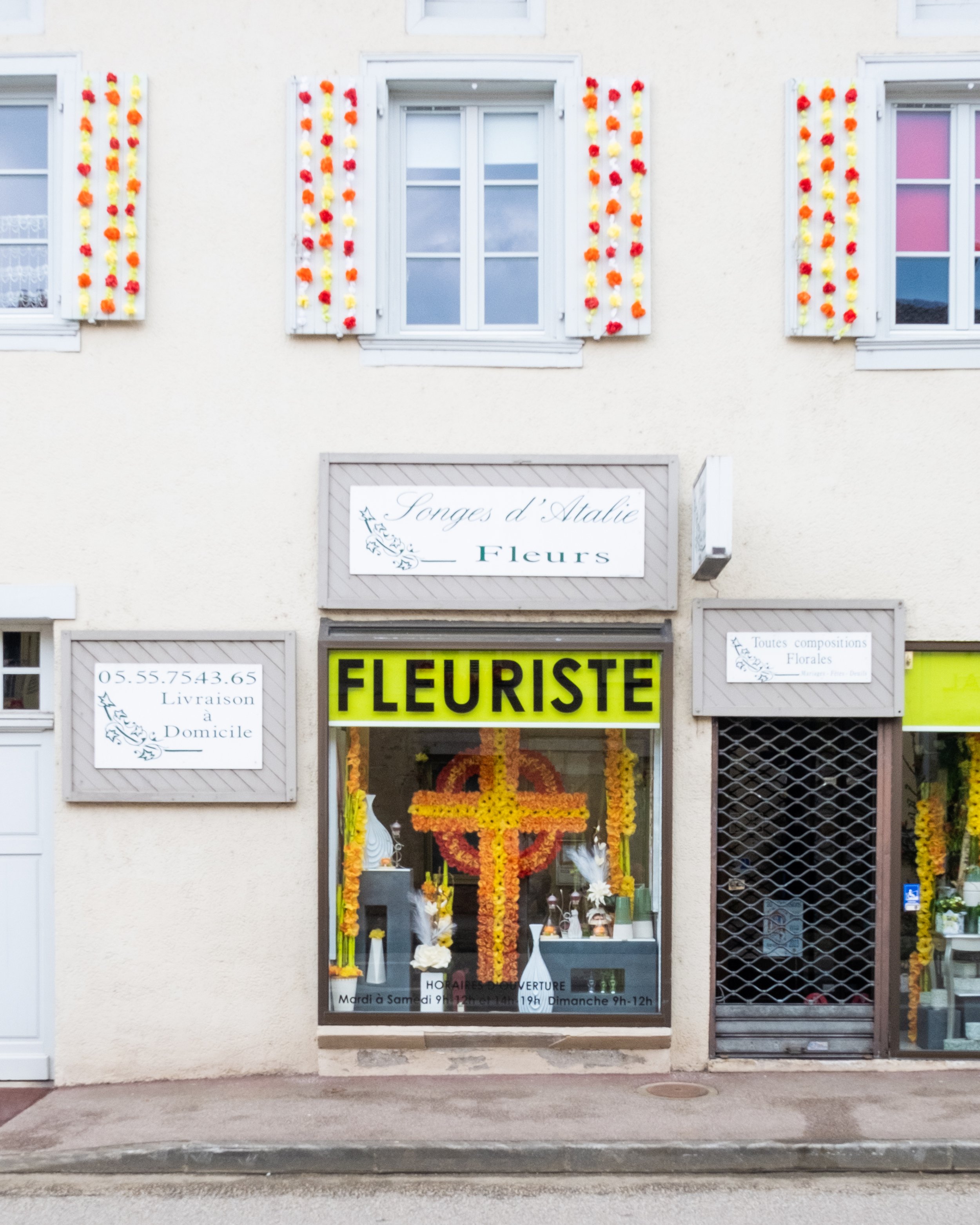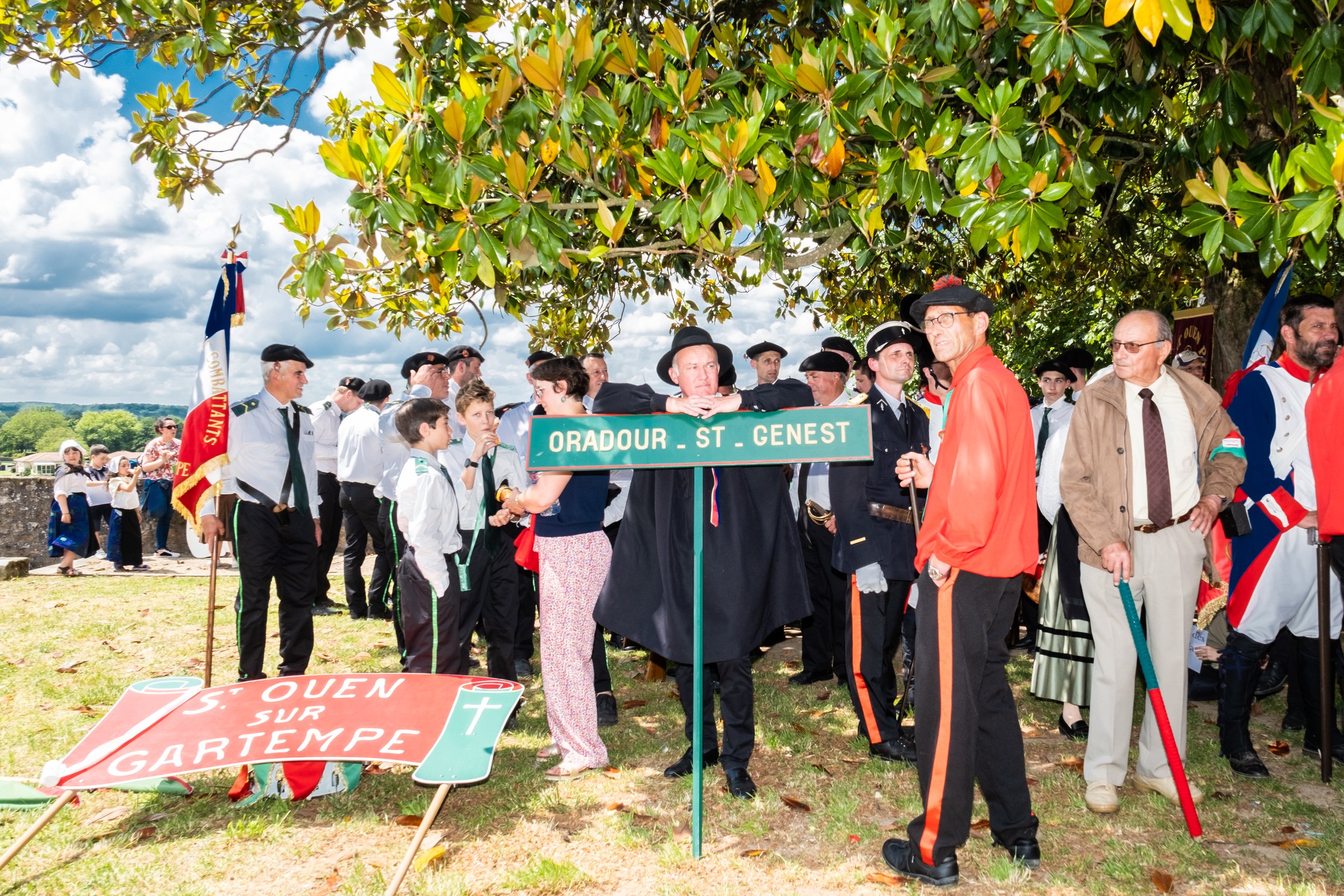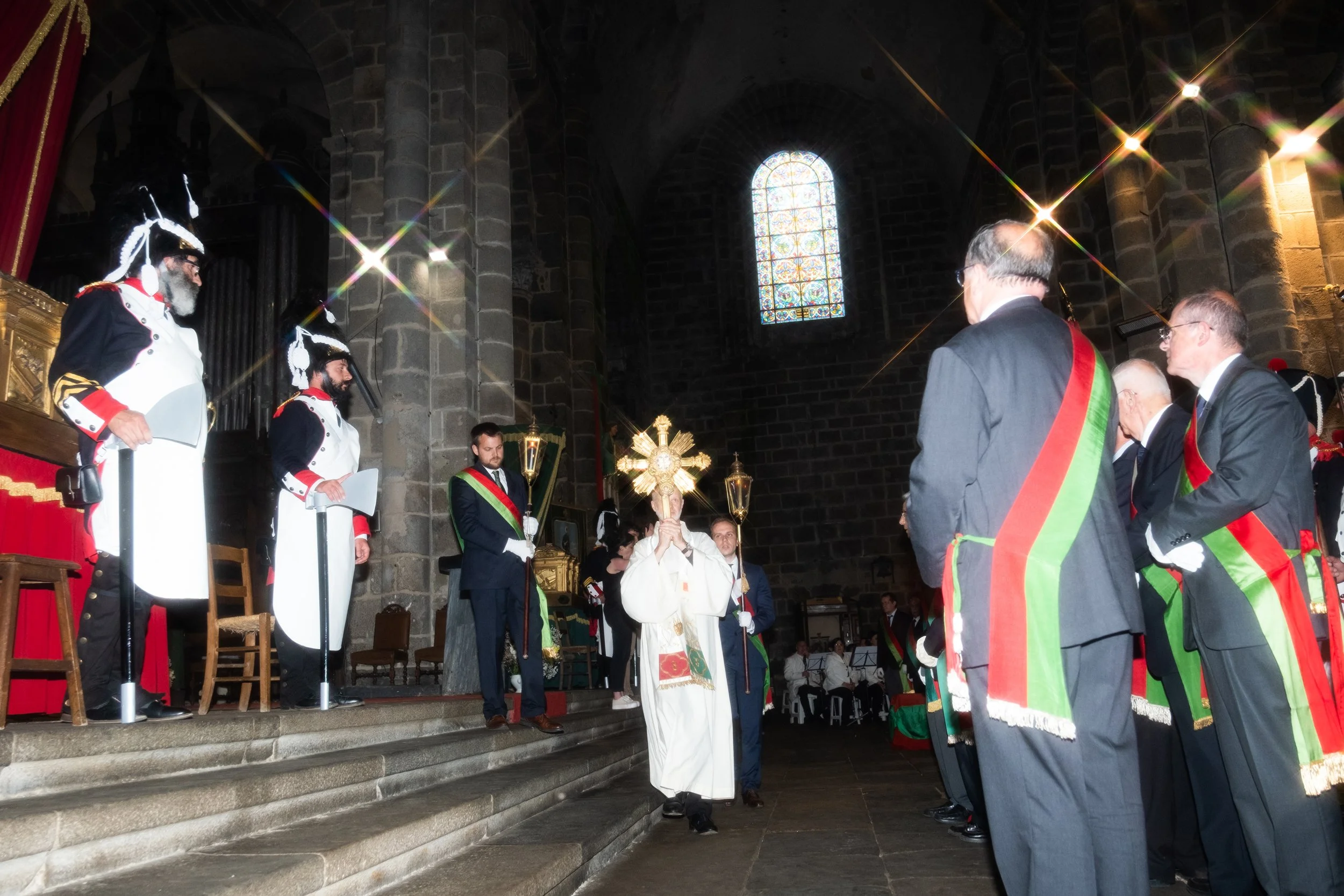LES ostensions
limousines
23
Saint- Yrieix-la-Perche
Aixe-sur-Vienne
Rochechouart
Le Dorat
ENG : The Ostensions Limousines are a series of septennial religious and popular ceremonies (parades, masses, gatherings...) to venerate protective relics.
This photo serie was shot in four Haute-Vienne towns: Saint-Yrieix-la-Perche (07/05/23), Aixe-sur-Vienne (21/05/23), Rochechouart (28/05/23), and Le Dorat (04/06/23).
Despite preconceived ideas about globalization, it documents the social importance and identity of an ultra-local tradition, and how the sacred continues to play an integral part in the value systems of the local population.
The history of these Ostensions goes back to the medieval period, to the 12th century to be precise, when a series of miracles put an end to a devastating epidemic of ergotism. This infection, caused by the contamination of wheat by a fungus that causes necrosis and gangrene in humans, decimated and traumatized the region. Only the work of saints seemed to be able to put an end to it, and legend has it that thousands of miracles took place.
Since this tragedy - and its mystical end - memorial processions have been held every 7 years in various towns in the region. Over 100,000 people attend each year. In 2013, Unesco declared them part of humanity's intangible cultural heritage.
FR : Les Ostensions Limousines sont un ensemble de cérémonies religieuses et populaires (défilés, messes, rassemblements...) septennales visant à vénérer des reliques protectrices.
Le reportage présenté a été effectué dans quatre villes de Haute-Vienne : Saint- Yrieix-la-Perche (07/05/23), Aixe-sur-Vienne (21/05/23), Rochechouart (28/05/23), et Le Dorat (04/06/23).
Il documente, en dépit des idées reçues autour de la mondialisation, l’importance sociale et identitaire d’une tradition ultra-locale ainsi que le maintien du sacré dans les systèmes de valeurs des habitants.
L’histoire de ces Ostensions remonte à la période médiévale, au XIIème siècle plus exactement, alors qu’une série de miracles met fin à une épidémie dévastatrice d'ergotisme. Cette infection, due à la contamination du blé par un champignon provoquant nécroses et gangrènes chez l’humain, décime et traumatise la région. Seule l’action de Saints semble pouvoir y mettre fin et la légende conte alors des miracles survenus par milliers.
Depuis cette tragédie - et sa fin mystique, des processions de mémoire se déroulent tous les 7 ans dans diverses communes du territoire. Elles rassemblent plus de 100.000 personnes chaque année. En 2013, l’Unesco les inscrit au patrimoine culturel immatériel de l’humanité.

ENG : What particularly interests me in these processions is the popular claim to a strong attachment to the land and to legends: banners brandished, standards, traditional costumes proudly worn, iconography ultra present in the processions demonstrate this.
The protagonists are sometimes absorbed in a collective moment, sometimes in a more individual slide, but in this series, they embody the specificity of a Limousin identity that is in flux, but resolutely attached to a sacred component.
In this reportage, I also wish to document the social aspect of these commemorations, vectors of intergenerational links. It's important to me to aim for a sensitive social realism, far removed from the picturesque. It's for this reason that some of my images show moments of intimacy, lightness and even humor on the bangs of the parades, but as an integral part of the celebrations.
Finally, as I want to capture the contemporary adaptation of a tradition with as little filter as possible, and therefore without falsifying the phenomenon, there is no staging: no posing in front of the lens, just subjects in motion. The entire investigation was carried out from an angle of proximity, by means of immersion in the processions, as close as possible to the participants.
general intro
FR : Ce qui m’intéresse particulièrement dans ces processions, c’est la revendication populaire d’un attachement fort au terroir et aux légendes : bannières brandies, étendards, costumes traditionnels portés fièrement, iconographie ultra présente dans les cortèges le démontrent.
Les protagonistes sont tantôt absorbés dans un moment collectif construit, tantôt dans un glissement plus individuel mais ils incarnent, dans cette série, la spécificité d’une identité limousine mouvante mais résolument attachée à une composante sacrée.
Dans ce reportage, je souhaite également documenter l’aspect social de ces commémorations, vectrices de liens intergénérationnels. Il m’importe en effet de tendre vers un réalisme social sensible, loin du pittoresque. C’est pour cette raison que certaines de mes images présentent des moments d’intimité, de légèreté, voire d’humour en marge des défilés mais faisant partie intégrante des célébrations
Pour finir, comme je souhaite retranscrire l’adaptation contemporaine d’une tradition avec le moins de filtre possible et donc sans falsifier le phénomène, il n’y a pas de mise en scène : pas de poses face à l'objectif, seulement des sujets en mouvement. L’ensemble de l’enquête a été travaillée avec un angle de proximité et donc au moyen d’une immersion dans les cortèges, au plus près des participant.e.s.


























